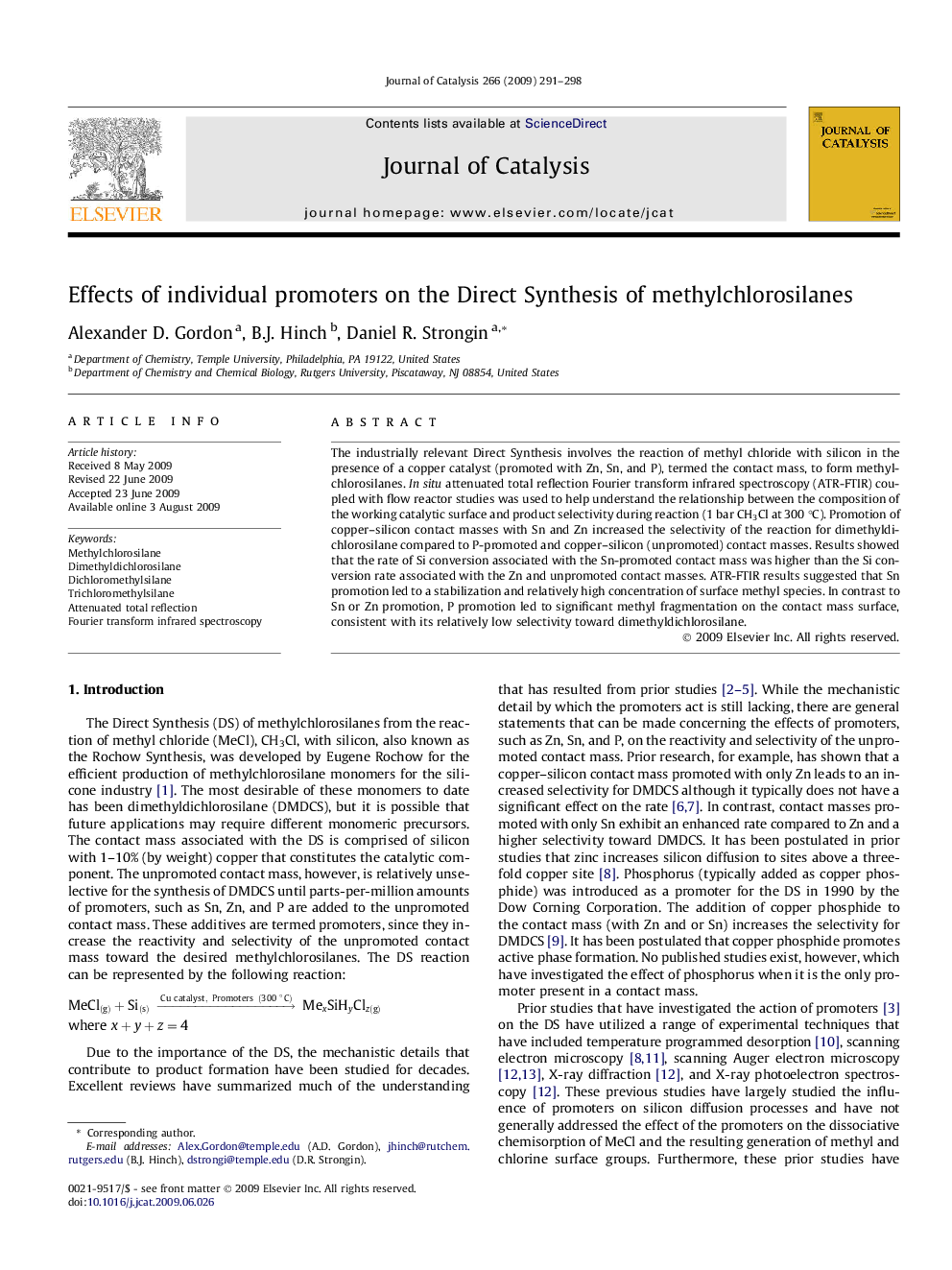| Article ID | Journal | Published Year | Pages | File Type |
|---|---|---|---|---|
| 62594 | Journal of Catalysis | 2009 | 8 Pages |
The industrially relevant Direct Synthesis involves the reaction of methyl chloride with silicon in the presence of a copper catalyst (promoted with Zn, Sn, and P), termed the contact mass, to form methylchlorosilanes. In situ attenuated total reflection Fourier transform infrared spectroscopy (ATR-FTIR) coupled with flow reactor studies was used to help understand the relationship between the composition of the working catalytic surface and product selectivity during reaction (1 bar CH3Cl at 300 °C). Promotion of copper–silicon contact masses with Sn and Zn increased the selectivity of the reaction for dimethyldichlorosilane compared to P-promoted and copper–silicon (unpromoted) contact masses. Results showed that the rate of Si conversion associated with the Sn-promoted contact mass was higher than the Si conversion rate associated with the Zn and unpromoted contact masses. ATR-FTIR results suggested that Sn promotion led to a stabilization and relatively high concentration of surface methyl species. In contrast to Sn or Zn promotion, P promotion led to significant methyl fragmentation on the contact mass surface, consistent with its relatively low selectivity toward dimethyldichlorosilane.
Graphical abstractThe Direct Synthesis, or Rochow Synthesis, produces methylchlorosilanes through the reaction of methyl chloride (MeCl) with a contact mass composed of Si and Cu (catalyst), which is promoted with part-per-million amounts of Zn, Sn, and P. Attenuated total reflection infrared spectroscopy was used to probe the surface composition of the contact mass in situ as a function of promoter and these results were correlated to product distributions that were determined by flow reactor studies. One significant correlation was that the presence of Sn led to an enhancement in CH3 surface concentration, MeCl conversion, and selectivity toward dimethyldichlorosilane product relative to unpromoted contact masses and contact masses promoted with zinc; it was noted that P-promoted surfaces also enhance surface CH3 concentration, but did not exhibit the increase in MeCl conversion and selectivity toward dimethyldichlorosilane.Figure optionsDownload full-size imageDownload high-quality image (68 K)Download as PowerPoint slide
